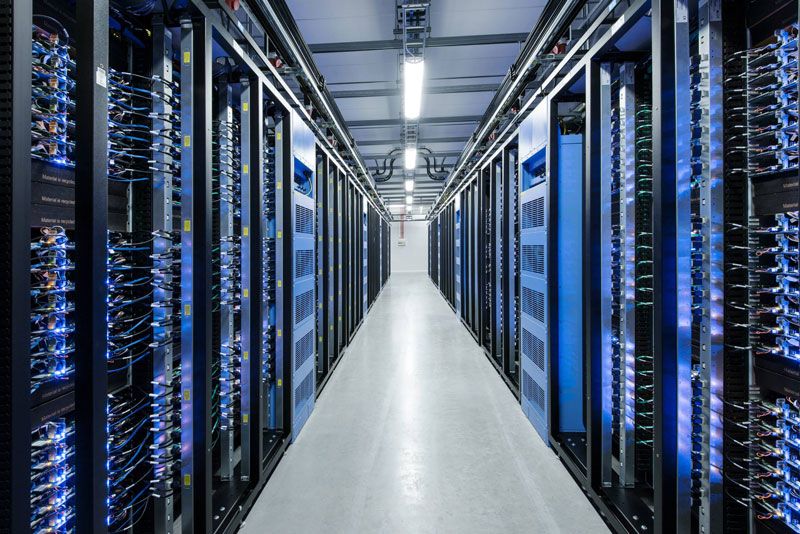Vulnerable Highways and Energy Infrastructure: Recent Major Failures

Reliable work of data centers is extremely important both for customers of operators of DC, and for owners of such objects. As previously reported, just a few minutes of data center downtime as a result of an accident can cost many owners and customers many millions of dollars. And after the forced downtime as a result of the accident, customers often charge large amounts from the operator of the DC. A similar situation develops when the data center is owned by a large telecommunications company, which needs to ensure reliable operation of its services.
And here comes the question of infrastructure security. And not only cooling systems, power supply, server and other equipment. We are also talking about backbone telecommunication channels, where, at times, nothing depends on the operators of DC, since the length of highways is thousands of kilometers. But damage to such a channel can lead to a network outage or certain services in a single country or even several countries. In addition to telecommunications, a similar situation develops with the external energy infrastructure of a certain region, where nothing also depends on the DC operator. Damage to the grid or a successful cyber attack on the grid leads to the fact that the data center stops due to the lack of sufficient energy.
And this is really important. It is so important that the other day the US Department of Energy announced the results of a study aimed at studying the vulnerability of this country's power grids. Representatives of this organization believe that the threat of cyber attacks on the American electricity distribution system is becoming more real. Moreover, individual attacks are already carried out and in some cases become successful.
')
How thorough and extensive was the study of the Ministry, can be judged by the size of the report: it contains 494 pages. The report was called the Landmark Quadrennial Energy Review. In particular, it says that in order to eliminate the described threat, it is necessary as soon as possible to modernize the energy infrastructure of the whole country, or at least individual regions where the critical elements of the power grid are located.
In general, this refers to data centers in the sense that when a large-scale power outage (really large-scale) data centers can not work normally. More precisely, only those data centers can be found where there are diesel generators of sufficient power capable of ensuring the uninterrupted operation of the entire facility for a long time or any other reliable autonomous sources of electricity.
What can cause interruptions in electricity, many people know. On the pages of Habrakhabr information about various accidents related to energy has been repeatedly published. One of them is the problems of the Telecity colocation provider, whose data center has suffered due to interruptions in the region’s energy infrastructure. In one of the cases, after the power supply was disconnected, the local power system simply did not have time to switch to work from standby generators. A little later, a second failure occurred, but the data center operator decided to repair the UPS system at this particular time, as a result of which a significant failure occurred again. Of course, the provider suffered losses.
It is difficult to imagine what will happen with the data center of a particular region or country if a major accident occurs in the energy infrastructure (for example, a successful cyber attack on the grid, as in the case of Ukraine, is only bigger). Even the most reliable data centers may have weak points that no one will know about before the accident. And even if the energy structure is quickly put in order, it can cost data center operators and their customers hundreds of millions, if not billions, of dollars.
But problems can be and not only in the event that the power systems start to fail. The reason may be simpler - damage to the Internet backbone. Relatively small communication channels are damaged very often - animals, people, natural factors. If you damage a major highway, then the Internet may disappear from the whole island or country. The most recent cases include, for example, a significant slowdown in the Internet on December 31 last year. As it turned out, the trunk cable connecting the island with Canada was damaged . To solve the problem, traffic had to be redirected through Iceland.

The cable connecting the Channel Islands to the “mainland” has recently been damaged. The Internet is also not completely gone, but the network bandwidth has decreased significantly. As it turned out, the problem happened after the ship unsuccessfully anchored on the submarine telecommunications highway. The anchor damaged the canal, and traffic needed to be redirected through France. The anchor fell so badly that three of the four communication channels were damaged at once. At first, the anchor damaged one of the cables, but later it damaged two more, as the ship shifted slightly and the anchor dragged along it along the bottom.
Source: https://habr.com/ru/post/320160/
All Articles